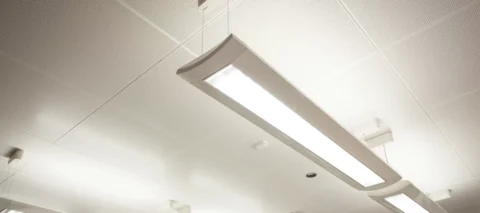First time getting Botox? We’ve prepared a short guide that covers everything you need to know to have a complete Botox experience.
In just four short steps, you can understand everything there is to know about Botox, the Botox experience, and whether or not Botox is right for you.
Step 1: Understanding Botox
What Is Botox?
Scientifically known as botulinum toxin A, Botox is an injectable drug derived from the bacterial toxin botulin. The bacterium – Clostridium botulinum – was first discovered back in the 19th century, when doctors linked its neurotoxin byproduct to paralysis in humans.
Since then, scientists have been able to safely isolate the paralysis-inducing properties of botulinum toxin A for various medical purposes, turning it into the injectable we know as Botox.
Learn more in our post: The Origin of Botox: How It All Started.
What Does It Do?
Botox is used to eliminate wrinkles in the face, but it works best on a specific type of wrinkles: dynamic wrinkles. Dynamic wrinkles are a result of years of facial expressions and other facial movements – if you love expressing your feelings through your face, then you’re likelier to develop dynamic wrinkles earlier than your peers.
Botox is ideal for dynamic wrinkles because it targets the nerves causing the muscle contractions inside of your face.
The other type is static wrinkles, which are caused by the loss of collagen and elasticity in your skin as a result of aging. While Botox can help with static wrinkles, these are better treated with facial fillers.
How Does It Work?
While deadly when encountered in the wild (generally from eating contaminated food or contact with contaminated soil), leading to botulism, Botox as an injectable is medically used for a wide variety of conditions, one of which being facial wrinkles.
Botox works through the paralysis-inducing effects of its base neurotoxin. Simply put, once Botox is injected into a part of the body, it paralyzes the nerves in the area, thus blocking the signals between the brain and the nerves. This can freeze muscles, sweat glands, and more, which is why Botox is just as commonly used to treat excessive sweating.
Once the nerves are paralyzed, the natural muscle contraction beneath the skin relaxes, leading to the skin itself relaxing, and the folds and wrinkles slowly disappearing. While Botox can only last for a few months per treatment, patients can safely undergo new treatments of Botox every few months.
What Else Can Botox Treat?
Botox is not limited to treating wrinkles and excessive sweating. The paralyzing effects of Botox are unique and useful, making it an important drug when treating a variety of conditions, such as:
- Eye disorders
- Migraine headaches
- Cervical dystonia
- Cerebral palsy
- Chronic neck pain
- Gastroparesis
- Depression
- Enlarged prostate
- Bell’s Palsy
Learn more: Medical Uses of Botox: Can Botox Treat Medical Conditions?
Where Can I Get It?
Botox can be used to treat the following facial wrinkles and lines:
- Frown lines: Lines in the forehead worsened by frowning and pushing your eyebrows forward
- Glabellar lines: The vertical lines found between the eyebrows and the eyes (above the nose)
- Crow’s feet: The horizontal lines found on the outer corner of either eyes, caused by squinting
- Upper lip lines: The subtle lines found above the upper lip
- Bunny lines: The thin horizontal lines that can be found along the side and middle of the nose
For other facial wrinkles, ask your doctor about the ideal treatment – whether it’s Botox, facial fillers, or something else.
Simple Truths About Botox
Botox Doesn’t Erase, It Prevents: Most people think of Botox as something that you do when you’re in your 40s or 50s, to try to achieve a more youthful face. While this is true, it also means that some younger patients who might be interested in Botox never truly consider it.
However, Botox actually might be better as a preventative treatment, since it freezes the muscles that create the dynamic wrinkles in the face. For deep and long-term wrinkles, Botox has less of an impact. The earlier you start Botox treatments, the more effective your long-term Botox results will be.
It’s Temporary, But Repeatable: We all know that Botox is a temporary treatment. The paralysis effects of the drug only last for anywhere from 4-6 months, or up to 12 months in certain circumstances.
The good news is that you can follow up one Botox treatment with another a few months down the line, thus creating a sort of permanent effect with no harm or risk.
It’s For Everyone: Botox has an old reputation for being a “just for celebrities” treatment, but these days it’s absolutely normal for anyone to get Botox. Prices are affordable enough for most people to get a Botox treatment every few months, and the desire to improve your skin is a natural instinct that you shouldn’t be ashamed of.
Step 2: Your Botox Plan – Are You Prepared?

Do You Really Need Botox?
One of the most common questions from first-timer Botox patients is whether they really need Botox, and whether it’s the right age for them to get Botox. So when should you get Botox, and do you really need it?
The simple answer is that you should get Botox when the fine lines on your face start to seriously bother you. For most people, the build-up of fine lines begins in their 30s; for some, this can happen as early as your mid-20s.
However, we understand if you still feel uncomfortable getting Botox at a young age. If you are in your early to mid 20s, you can consider improving your stress levels, diet, and exercise to reduce the growth of fine lines as you age.
When to Consider and Not to Consider Botox
| When To Think About Botox | When NOT To Consider Botox |
| You have facial wrinkles caused by muscle contraction – moderate to severe | You are breast-feeding or currently pregnant |
| The wrinkles are on your forehead, around the eyes, between the eyes, and/or along the neck | You are unhealthy, with a serious infection or illness, especially if the infection is along or connected to the injection site |
| You are physically and mentally healthy | There is a possibility that you are allergic to Botox or any of its ingredients |
| You understand the process and limitations of Botox, and you have discussed your expectations with your doctor | You do not properly understand Botox and your expectations have not been discussed with a doctor |
What Does It Cost?
Botox is priced per unit, costing roughly $10 to $15 for each unit of Botox. The number of units required for your treatment depends on the number of injection sites involved; for the average treatment on the forehead, patients should expect to pay for anywhere from 8 to 20 units of Botox. This leads to a rough cost of $200 to $300 per treatment (including doctor and clinic fees).
What Other Options Are Available?
For dynamic wrinkles – wrinkles in the neck, face, and forehead that are caused by muscle contractions, there aren’t many other options as effective and impactful as Botox. What makes Botox different from other treatments is that it targets your skin beyond the surface-level, by treating the tense muscles leading to the wrinkles.
However, if Botox is not an option you want to consider, other possible treatments include microdermabrasion and chemical peels, as well as invasive surgical procedures such as facelifts, neck lifts, and brow lifts.
Dermal fillers can also be used, but they are better suited for static wrinkles.
Possible Side Effects
Almost all possible side effects from Botox as a facial wrinkle treatment are a result of poor injection technique, leading to the Botox affecting an area and muscle other than the intended target. Other side effects are caused by a negative reaction to the Botox itself. These side effects include:
- Allergic reactions
- Appetite loss
- Nausea
- Headache
- Stomach Pain
- Muscle stiffness
- Swelling or bruising at injection site
- Dry mouth
- Fever
- Itching
- Drowsiness
If you feel any possible side effects after your Botox treatment, consult your doctor immediately.
Step 3: Finding the Team You Can Trust

Like with any medical and cosmetic procedure, the most important step towards ensuring that you have a flawless and stress-free experience is in choosing a doctor and clinic you can trust.
As Botox is not a serious or invasive medical procedure, there are many unqualified practitioners and suppliers of Botox, leading to botched cases and disappointed (or worse) patients.
Here are some questions you should ask at your pre-procedure Botox consultation to assess the qualifications of your chosen doctor and clinic:
Questions to Ask at Your Botox Consultation
Q: What are your qualifications?
The right A: A degree in medicine or dentistry, or any kind of qualification or training for nurses.
Why: While there are many beauticians who offer Botox, remember that they do not have the training, experience, or education to handle any possible complications that might arise. Doctors and nurses have the understanding to deal with anything unexpected, meaning you are in safe hands if anything goes wrong.
Q: How many times have you performed this procedure?
The right A: The ideal doctor should have performed hundreds of Botox procedures over several years. If you desire, they should have before and after pictures of their previous pictures available and on-hand for your perusal.
Why: While Botox might seem like a simple procedure, it’s important to remember that even the simplest procedure can go wrong. The more experienced a doctor is in administering Botox, the more they will develop and inherent understand of the way your face and skin might react to it.
Q: Do Botox results last forever?
The right A: No, however, you can come back for follow-up treatments when the results start to wear off in a few months.
Why: This is a basic fact of Botox, and if any potential Botox injector tries to convince a patient that their brand of Botox will last longer in their face – for up to several years – then it’s not the type of Botox injector you will want to trust.
Q: What kind of side effects can I expect?
The right A: Side effects of the Botox procedure are generally caused by the Botox or the technique of the injection.
Why: In most cases of Botox going wrong, the problem is that the product was injected in the wrong spot. Your potential Botox doctor should be aware of this, reassuring you that they have mastered their injection technique.
Q: Is there any follow-up care?
The right A: Yes, a review of your face after two weeks.
Why: A good Botox doctor should always insist on a review of the results two weeks after the procedure. This should involve any small corrections that they believe are necessary to enhance and perfect the results of your Botox treatment.
Watch one of our patient’s testimonial of her first Botox treatment at Ethos Spa:
Step 4: The Botox Experience
Preparation
Your pre-procedure Botox consultation should involve the doctor telling you everything you need to know to prepare for your Botox treatment. This includes things you should avoid in the days leading up to the treatment, to make sure that everything goes smoothly.
- Avoid cigarettes: Cigarettes can increase the possibility of bruising on the injection site, leading to a longer recovery time
- Avoid blood thinners (and other medications): Muscle relaxants and blood thinners increase the possibility of bruising and bleeding during injections. If you are taking any medications, inform your doctor.
- Apply cream: Patients who are prone to bruising can consider applying certain creams to their skin – the area of the injection site – shortly before the procedure.
Procedure
The Botox procedure itself should only last up to 20 minutes.
- The patient is seated
- The doctor marks the injection sites
- A cleanser will be applied to the skin, cleaning the skin thoroughly
- If the patient desires, a layer of topical numbing cream can be applied to the injection site, to lessen the pain of the injections
- The Botox is then injected into the face, in the sites where the muscles are leading to wrinkle formations
- A patient can expect anywhere from 1-3 injections for each muscle
- Patients can experience some minor discomfort during the procedure due to the injections
After the injections are complete, the doctor and the patient should discuss recovery, after-care, as well as the follow-up review appointment.
After-Care
Here are a few tips on how to handle yourself in the hours and days following your Botox treatment:
- Do not touch the injected areas: It can be tempting to rub or massage your injection sites, but this is highly discouraged. You want the Botox to settle in the targeted areas; rubbing or massaging it can spread the Botox to unwanted locations.
- Do not lie down or exercise: For around 4-6 hours after the procedure, try to avoid intense physical activity or lying down, as both of these can contribute to unwanted Botox spreading.
- Avoid alcohol: Alcohol leads to more bruising at the injection sites due to fluid retention, so avoid alcohol for 1-2 days after the Botox treatment
On top of avoiding the injection sites, make sure to stay attentive to any possible side effects. If you feel anything abnormal that you believe might be related to your Botox treatment, consult your doctor immediately or within a few days (depending on the severity of the feeling).
Book Your Botox Consultation at Ethos Spa
Ready for your Botox experience? Or are you interested in learning more about Botox and what it can do for you? At Ethos Aesthetics + Wellness, home of countless successful Botox treatments and other cosmetic procedures in New Jersey, our team is always ready to serve and inform.
Book your Botox consultation at Ethos Spa today.







